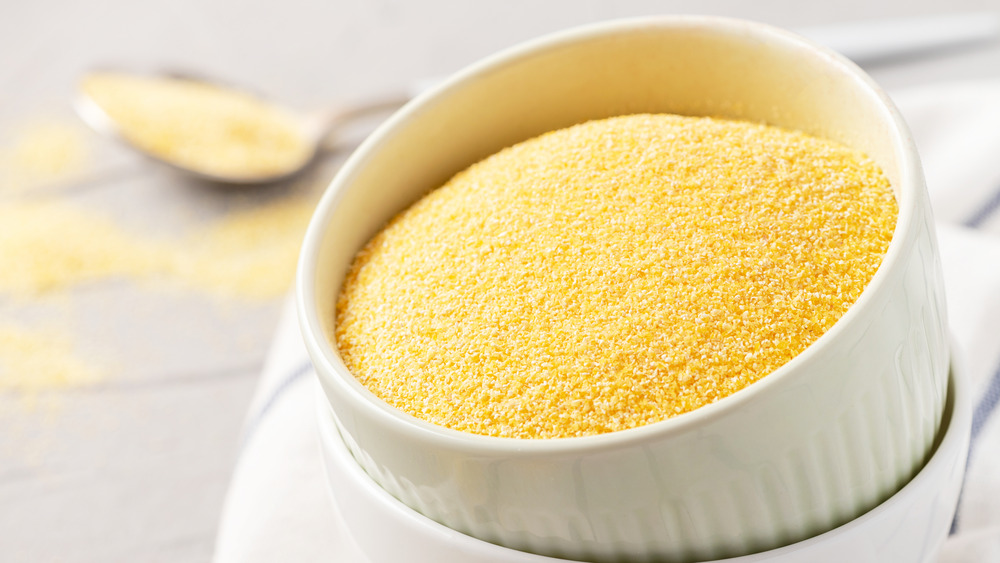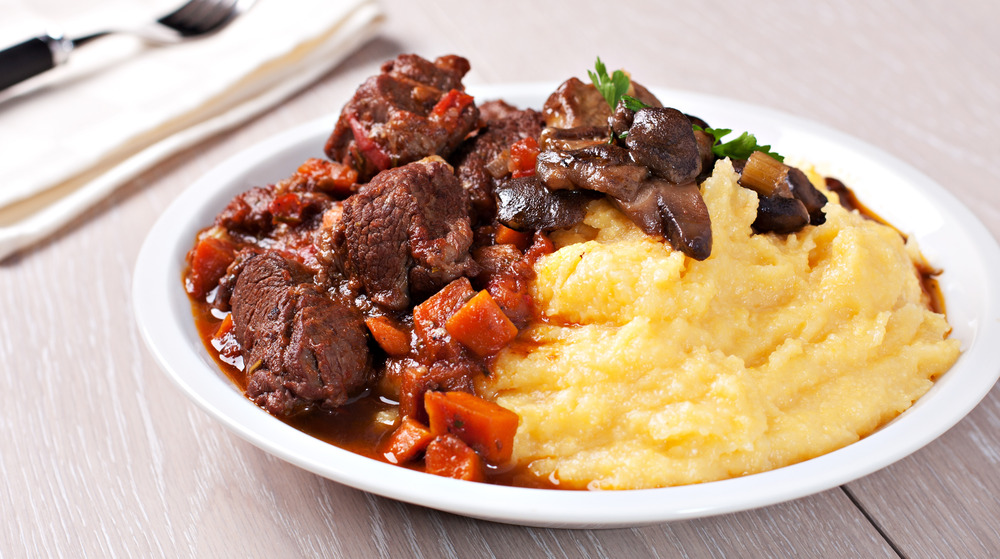Authentic Polenta Can Be Made Only With This Type Of Corn
Not everyone is exactly sure what polenta is, and when they ask, the answer is usually something along the line of: "It's like grits." According to Taste of Home, ground corn gives us three types of similar products: corn meal, grits, and polenta.
Cornmeal, made from grinding down (or "milling") dried corn, is easy to find in your supermarket and you probably have a cardboard canister of it in your cupboard right now. It's the main ingredient in cornbread and hushpuppies and is great for coating fish before frying. Grits are slightly different. Turning corn into grits starts with nixtamalization — a process that involves loosening the kernels with a lye solution, then grinding them up, Taste of Home explains.
For polenta, millers skip the nixtamalization process, so the starches are harder and coarser. However, Taste of Home assures that they still have a creamy texture after being cooked. This is one of the major differences between grits and polenta, but you can oftentimes differentiate them by their color, too, as Allrecipes explains. Polenta is yellow, and grits tend to be a bit whiter. But there's one other key difference that separates the two that has to do with the corn.
Polenta uses a different variety of corn
The term polenta, as with grits, is commonly used for both the uncooked milled corn itself and the prepared dish. Once regarded largely as "peasant food" by Italians, it's now found on fine dining menus around the world, according to Great Italian Chefs. Polenta is creamy, starchy, and has a subtle palette that make it perfect for flavorful dishes like Polenta and Meat Sauce (via Food & Wine) or Vegan Creamy Polenta and Red Wine Mushrooms (via Rabbit and Wolves). Polenta is a natural accompaniment for stews and saucy dishes because it soaks up every bit of delicious sauce, gravy, or juice.
As opposed to dent corn, which is used to make grits, says Taste of Home, authentic Italian polenta must start with flint corn. Also known as "calico" or "Indian" corn (via Wide Open Eats), this type is commonly seen in fall decorations, and is used, according to Kitchn, because it's better at retaining its texture when cooked. This helps explain the slight difference in texture between the two.
In addition to the recipes linked above, a classic and immensely satisfying way to serve polenta is to add cheese and serve it as a side dish. Why not try a delicious bowl of cheesy, buttery polenta the next time you're craving comfort food?

